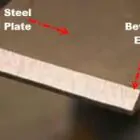What should you do when there are a lot of welded parts to make? You make robotic welding cells in a certain way because different parts need different solutions.
Still, the main things that robotic welding cells do are always the same, no matter what the part is. Positioning the part, changing the contact tip, and cleaning the torch are all pretty standard tasks. Current robotic welding cells may use a wide range of modules. So designers don’t have to reinvent the wheel, which is excellent for the environment. Experts just need a platform or a group of and good parts that you can be place together in different ways.
Robotic welding has powerful engineering software.
Powerful software with extensive libraries of standard modules for all robot peripherals can create robotic welding cells. The designer doesn’t have to always develop basic pieces like robot travel paths, stands, and rotating tables from scratch. So they can focus on solving the customer’s most critical needs. For instance, creating a good clamping device or determining the welding order to prevent warping. Another benefit of modular systems is that they are very cost-effective. Less development time saves money and decreases prices and client financing needs.
Modules and what they do
The modules satisfy customer needs and perform essential robotic welding system functions. You divide them into assemblies, sub-assemblies, and pieces. And you can prepare them in advance for the engineering software library and robotic welding cells.
Robot for welding and measuring
Welding robots excel in accuracy and repetition. Design, reach, and load-bearing capability you should plan ahead for flexible parts and welding sequences and high-quality welds.
A robot with a small footprint, narrow arms, and a long reach can weld in small areas. Axles, holders, seats, exhaust systems, chassis frames, crane superstructures, tank and pipework parts are all examples of this.
Resistance spot welding and LaserHybrid welding require robots that can handle hefty welding torches.
The Usual Things
Many system controllers have user and programme management, fault indications, cycle and part counting, system status displays, and language switching. Common ERP interfaces and a web API for delivering data to third-party systems are also offered.
Offline programming: less money spent on downtime and more work done.
How cost-effective a production process is is largely based on how well it welds and how much it welds. But what can be done to make them worth more? One option is to programme the welding sequences outside of the robotic welding cell, or “offline.” This lets them be fully optimised ahead of time.
Then, the robot’s programmers don’t have to wait for the welding to finish before they can move on to the next step. Instead, they can teach the robot from a PC or laptop that is not connected to the robot and then simulate the whole welding sequence offline, seam by seam.





